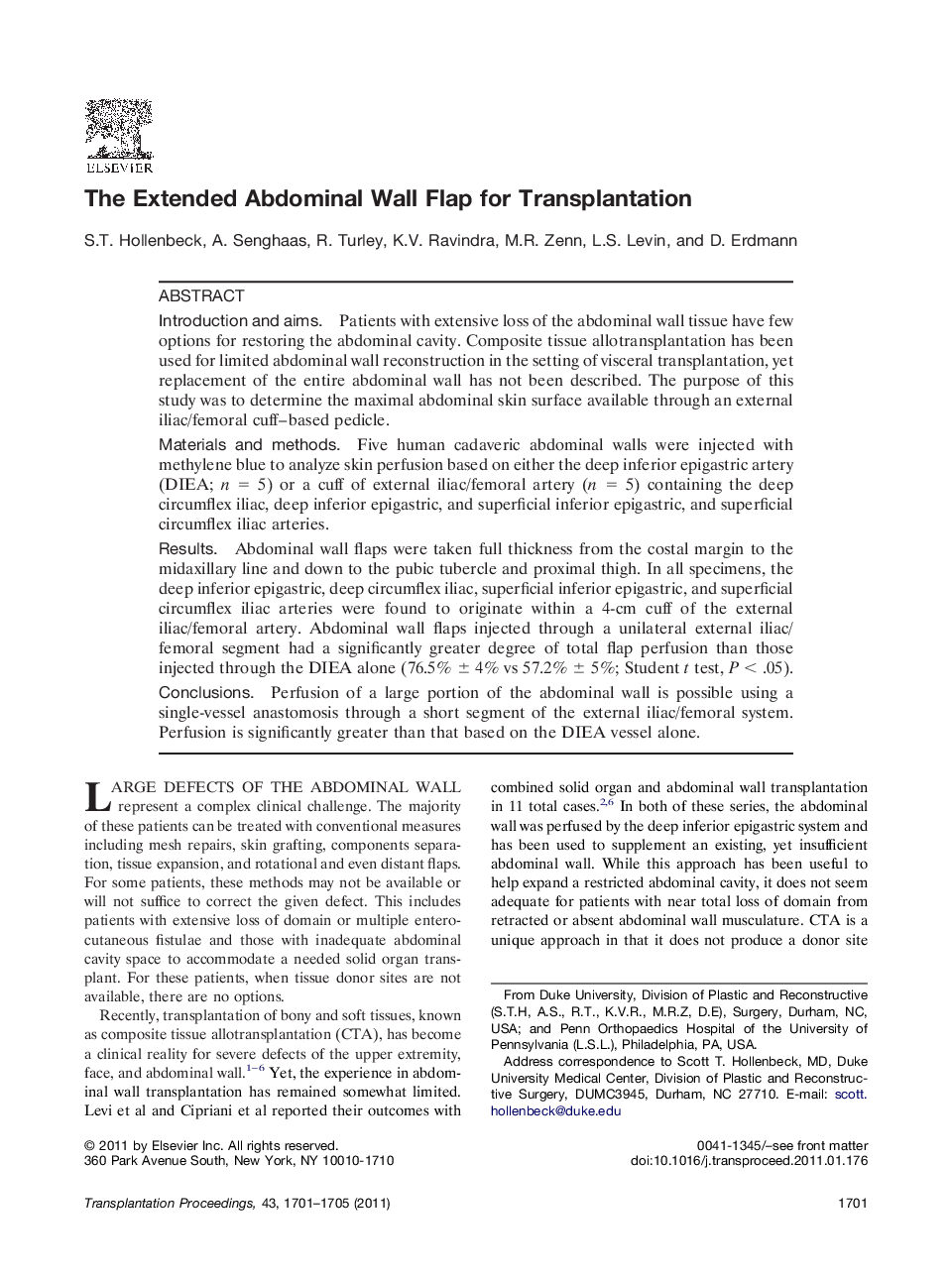| Article ID | Journal | Published Year | Pages | File Type |
|---|---|---|---|---|
| 6249291 | Transplantation Proceedings | 2011 | 5 Pages |
Introduction and aimsPatients with extensive loss of the abdominal wall tissue have few options for restoring the abdominal cavity. Composite tissue allotransplantation has been used for limited abdominal wall reconstruction in the setting of visceral transplantation, yet replacement of the entire abdominal wall has not been described. The purpose of this study was to determine the maximal abdominal skin surface available through an external iliac/femoral cuff-based pedicle.Materials and methodsFive human cadaveric abdominal walls were injected with methylene blue to analyze skin perfusion based on either the deep inferior epigastric artery (DIEA; n = 5) or a cuff of external iliac/femoral artery (n = 5) containing the deep circumflex iliac, deep inferior epigastric, and superficial inferior epigastric, and superficial circumflex iliac arteries.ResultsAbdominal wall flaps were taken full thickness from the costal margin to the midaxillary line and down to the pubic tubercle and proximal thigh. In all specimens, the deep inferior epigastric, deep circumflex iliac, superficial inferior epigastric, and superficial circumflex iliac arteries were found to originate within a 4-cm cuff of the external iliac/femoral artery. Abdominal wall flaps injected through a unilateral external iliac/femoral segment had a significantly greater degree of total flap perfusion than those injected through the DIEA alone (76.5% ± 4% vs 57.2% ± 5%; Student t test, P < .05).ConclusionsPerfusion of a large portion of the abdominal wall is possible using a single-vessel anastomosis through a short segment of the external iliac/femoral system. Perfusion is significantly greater than that based on the DIEA vessel alone.
